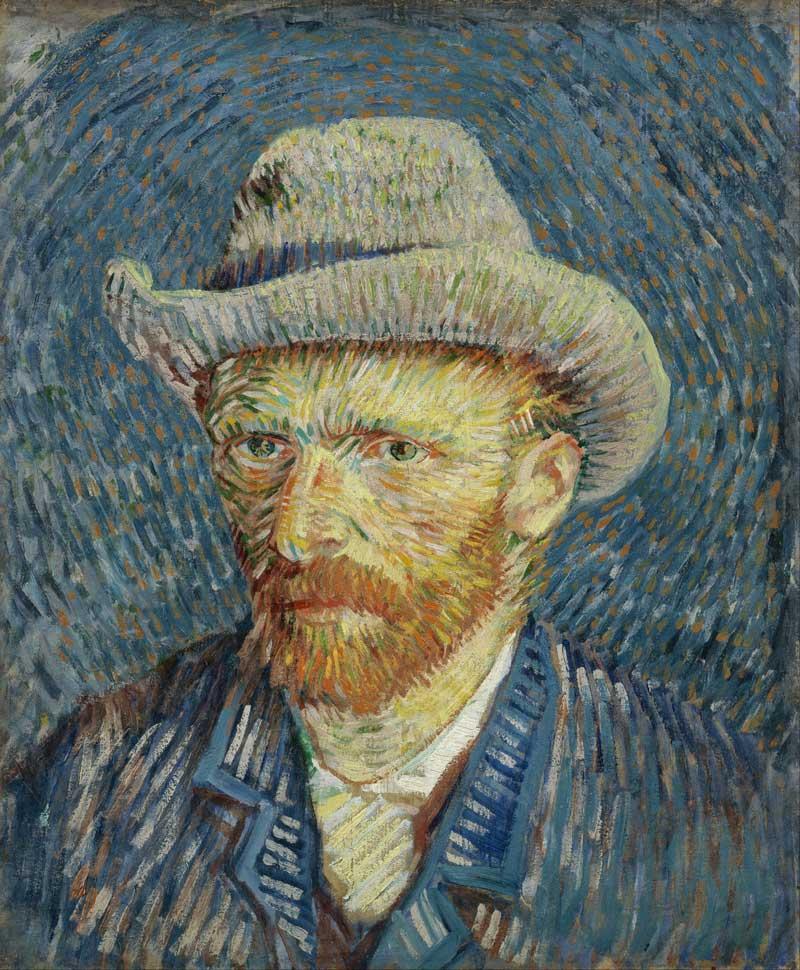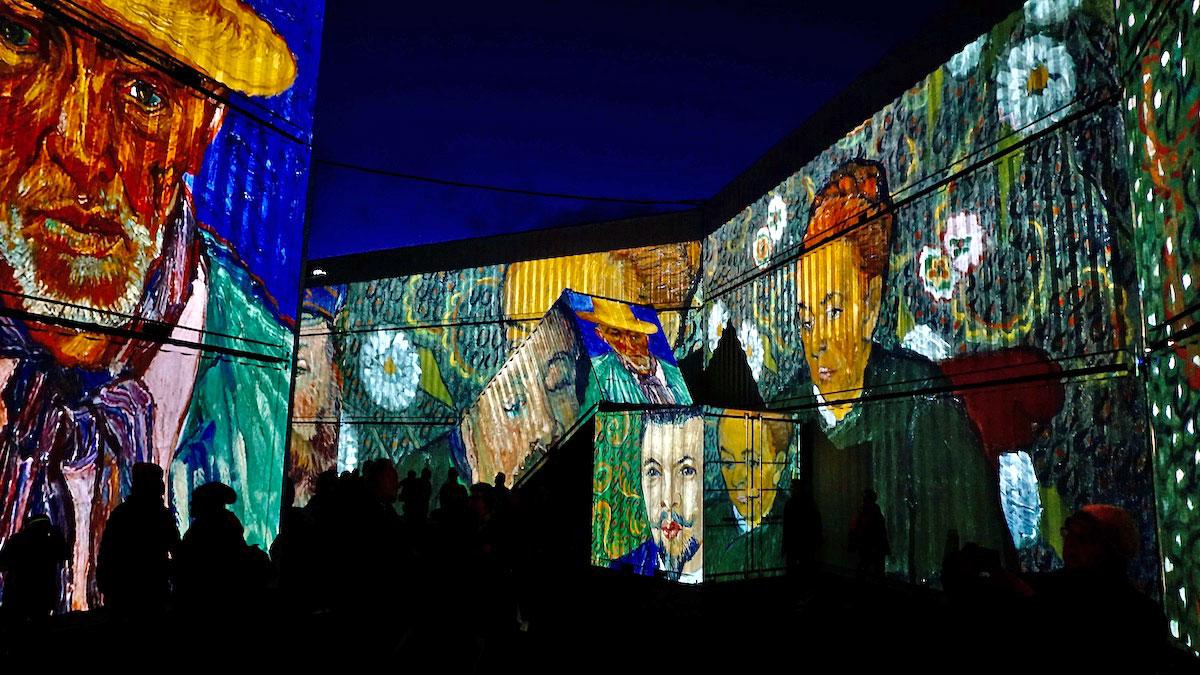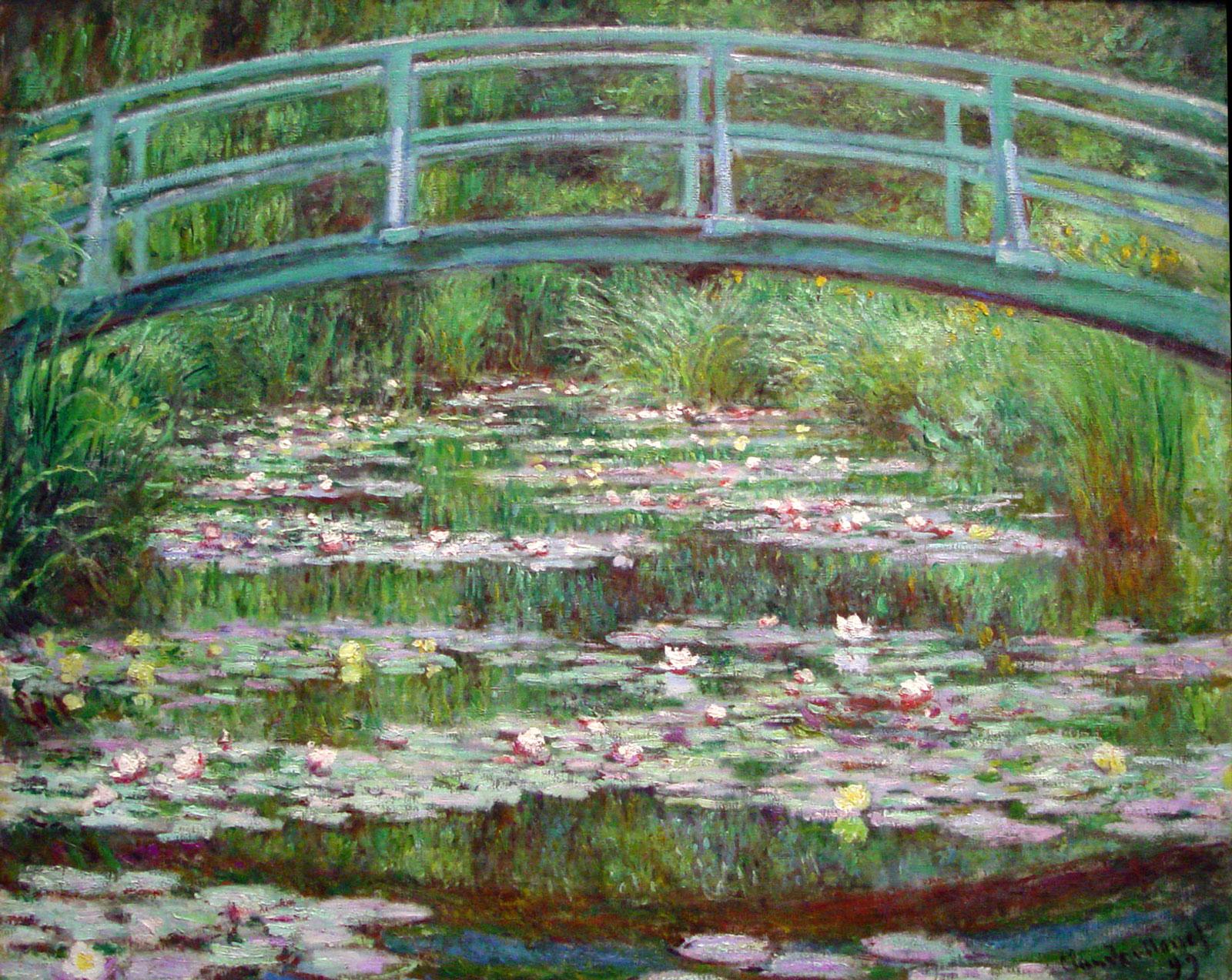Immersive art, the newest punchline in our technology-driven, projection-based, manifestation of an art world experience being hyped in cities around the world, is not so new. In 2021, pandemic-weary New Yorkers had the opportunity to experience two Van Gogh exhibitions. At Pier 36, event space ticket sales were brisk for Immersive Van Gogh. Another venue, Skylight on Vesey, hosted Van Gogh the Immersive Experience. The confoundingly similar titles caused more than a little confusion. These were not the only mega-multi-sensory extravaganzas competing for attention that same year. Multi-disciplinary artist duo Lonneke Gordijn (b. 1980, the Netherlands) and Ralph Nauta (b. 1978, United Kingdom), who goes by the moniker Drift, presented Fragile Future, an “immersive exhibition” of kinetic sculptures reminiscent of surrealist Magritte. Monumental forms seemingly floated through the four-story-high, 17,000-square-foot space at the Shed in Hudson Yards.
Immersive Art Experiences Mix Art, Money and Hype

A clear sign that investors were taking notice of the huge popularity of these for-profit shows came in 2022 when Goldman Sachs Asset Management led a funding round that brought in $227 million for Fever Labs, the company behind Van Gogh: The Immersive Experience.

Self-portrait with Grey Felt Hat by Vincent van Gogh
“You can see many immersive exhibitions; they will show you many things which are different. In my immersive exhibition, what you're going to see is the details of how the painter is here, present, even if he's not.”
Annabelle Mauger curator of Imagine Van Gogh from Cathédrale d'Images
Although the first Disney-on-steroids experience of Van Gogh’s paintings started in Europe in the early 2000s, the appetite for Van Gogh has proven to be bottomless. Recent presentations featuring the beloved post-impressionist in the United States include Imagine Van Gogh: The Immersive Exhibition, the Immersive Van Gogh Exhibit, Van Gogh: The Immersive Experience, Van Gogh Alive, and Beyond Van Gogh.
These touring spectacles have blanketed cities across the country including Atlanta, Chicago, Columbus, Houston, Indianapolis, Los Angeles, Phoenix, San Francisco, Seattle, St. Petersburg, Philadelphia, and Charlotte, while some larger cities; Boston, Dallas, Miami, and as described earlier, New York, have multiple shows by different vendors. Variations in the stories and the life events of Van Gogh differentiate these offerings from each other, but the gargantuan-sized, digitally delivered, constantly evolving imagery of mostly familiar artworks, accompanied by a hyper-emotional soundtrack seem part of the genre’s formula. None of these experiences have much to do with the physicality of Van Gogh’s energy-filled, thick impasto brushstrokes. They do not translate into flat, digital images. The distortion of the modest scale of Van Gogh’s actual paintings blown up to overwhelming proportions does not seem to matter.

"Van Gogh Alive" exhibit in Wellington, New Zealand in 2021
A clear sign that investors were taking notice of the huge popularity of these for-profit shows came in 2022 when Goldman Sachs Asset Management led a funding round that brought in $227 million for Fever Labs, the company behind Van Gogh: The Immersive Experience. The largest-ever round of funding for a live-entertainment startup, Fever claims this brought its valuation to more than $1 billion. Other big-money operators in the art world like the blue-chip gallery Pace have also signed on to the trend by launching Superblue, a company focused on building E.A.C.s–experiential art centers. Drift: Fragile Future at The Shed was organized by Kathleen Forde, Senior Curator at Superblue. It marked the organization's debut presentation in New York, following the launch of its experiential art center in Miami this past May.
In July 2022, The LUME Indianapolis, part of Newfields, a campus including the Indianapolis Museum of Art, launched Monet & Friends Alive, promising a “one-of-a-kind” experience consisting of 150 floor-to-ceiling high-definition projectors turning their fourth-floor galleries, nearly 30,000 square feet, into “a three-dimensional masterpiece.” Jonathan Berger, Vice President of Marketing and External Affairs at Newfields said, “We’re excited to see how this year’s Monet Alive show will impact those in our community, the Midwest, and nationwide. Newfields was transformed by last year's Van Gogh show, so this year we’re continuing to look for ways to add new surprises, educate our visitors, and welcome new faces to the museum.” The show will include a life-sized replica of the oft-painted bridge seen in Monet’s 1899 Bridge Over a Pond of Waterlilies.

The Japanese Footbridge by Claude Monet.

Pablo Picasso. 1962.
“The first thing to remember is that Picasso was an ogre, whose work is deeply driven, carnal, irrigated by sex and death. The very principle of the exhibition Imagine Picasso is perhaps, from a sensory point of view, pictorial and metaphysical, based on the notion of orgy.”
Rudy Ricciotti, architect of Imagine Picasso
The LUME project and Monet & Friends Alive is the brainchild of Bruce Peterson, owner and founder of Australia-based Grande Experiences. The company boasts of “having delivered more than 210 multi-sensory experiences across six continents.” Peterson’s first venture, Da Vinci: the Genius was produced in 2005 in Italy where Peterson navigated complex bureaucratic, cultural, and challenging scientific hurdles before releasing what may be the most educational, scientifically viable example in his multi-media exhibition empire. Peterson has now managed to franchise and commodify eleven immersive experiences. In addition to Da Vinci-the Genius, Van Gogh Alive, and Monet & Friends Alive, his portfolio includes Street Art Alive, Dali Alive, Italian Renaissance Alive, and flirts with Disneyesque territory in Alice–A Wonderland Adventure. The Discovery Channel comes to mind with Planet Shark: Predator or Prey. In interviews, the likable, avuncular Peterson has the air of a circus ringmaster, a self-made cultural and economic success, now riding the wave of international hunger for immersive entertainment.
In 2008, the international artist collective teamLab in partnership with Mori Building, a prominent Japanese real-estate developer, launched an enormous space in Tokyo incorporating fifty immersive exhibits. They recently announced a move to a new location elsewhere in Japan opening in 2023. In addition, Pace’s US-based Superblue engaged teamLab to install a suite of interactive exhibits titled Between Life and Non-life in their new Miami venue. TeamLab's work has a mesmerizing, therapeutic effect as seen in Water Particles Transcending Boundaries where visitors are encouraged to sit back and relax while simulated waterfalls wash over them.
Surprisingly the true origins of the immersive art experience began long before digital media existed. Albert Plécy (1914-1977) was a French photographer, artist, filmmaker, and journalist who, in 1975, established La Cathédrale d’Images in the former limestone quarries of Les Baux-de-Provence. Using dozens of carousel projectors to cast images of frescoes against the towering white stone walls of the quarry, Plécy also orchestrated an accompanying soundtrack while actors and visitors were illuminated by the ever-changing projections. The attraction was a hit, drawing many international visitors. After Plécy’s death, his second wife, Anne, continued his work until she died in 2002. The city took over the rights, eventually renaming the show, Carrières de Lumières in 2012. By 2022, the project has evolved and Plécy would likely be right at home seeing brilliantly colored images of Venice from Canaletto to Monet and Yves Klein, Infinite Blue splash across those same towering quarry walls.
As the creeping tentacles of technology infiltrate every aspect of our lives, we are presented with contradictory outcomes. Societal reliance on digital communication has been implicated in fostering a sense of isolation and loneliness. Rather than isolating us, it provided a lifeline to our emotional, psychological, and even in some cases to our physical survival, particularly during the recent pandemic-induced lockdowns. It is in the realm of the physical, the sensual, the emotional, and our right brain functioning world, that immersive art operates.
Most digitally-driven blockbuster immersive art media is designed to feed you stuff that is so familiar, that you don’t have to do the intellectual work of extracting meaning. Instead, you can just sit back, relax, and enjoy the comforting familiarity of images as they wash over you.




























